
Making the Bass Bar
The bass bar function is to reinforcing the belly of the violin beneath the line of the largest (G )string, directly under the foot of the bridge. It helps transmit low frequency vibrations from the string to the body of the instrument.
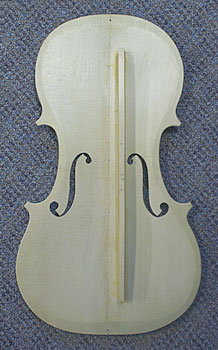
I started with a piece of Englemann Spruce, 270mm long, 5.5mm wide and about 20mm high.
The theoretical length measurements comes from 7/9 the belly length.
I cut a rough profile of the bass bar to fit the inner part of the belly. Then attached a one inch strip of 100gt, sticky-back sandpaper to the inside of the belly where the bass bar goes. I held the under side of the belly with my one hand and then rubbed the bass bar back and forth over the sandpaper until the bass bar fit the profile of the belly perfectly.
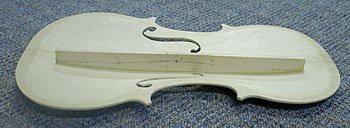
The placement of the bass bar is 20mm(half the width of the bridge)-1mm parallel the center glue joint, to outside of the bar, under the bridge position. The end measurements are achieved by measuring the widest part of the upper bout, dividing by 2 and then by 7. This is how many millimetres to the inside edge of the bass bar from the center glue joint. The same is done for the lower bout. If the three measurements don't line up in a straight line, the upper and lower marks must be adjusted the equal distance to maintain the mark under the bridge position.
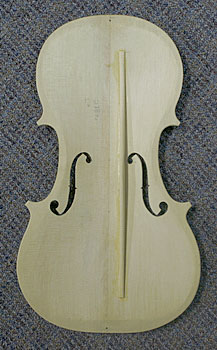
Taken from the center glue joint to the inside edge, my measurements where 11.5mm for the upper and 14.5mm for the lower, while still maintaining the center measurement under the bridge position. As you can see it is slightly leaning toward the center glue joint at the top. It was glued 40mm from each end.
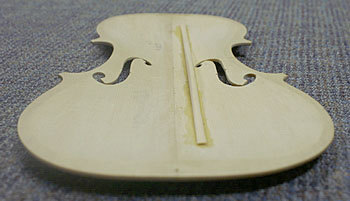
To get the profile of the bass bar, I divided it into 8 segments, heights at each segment were a mirror image from center out to each end. The highest point is moved off center, 1/3 of the segment towards the bridge position, (lower bout).
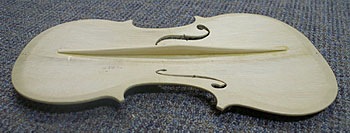
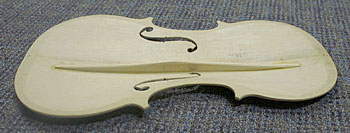
The bass bar specifications were acquired from Jim Novak .






